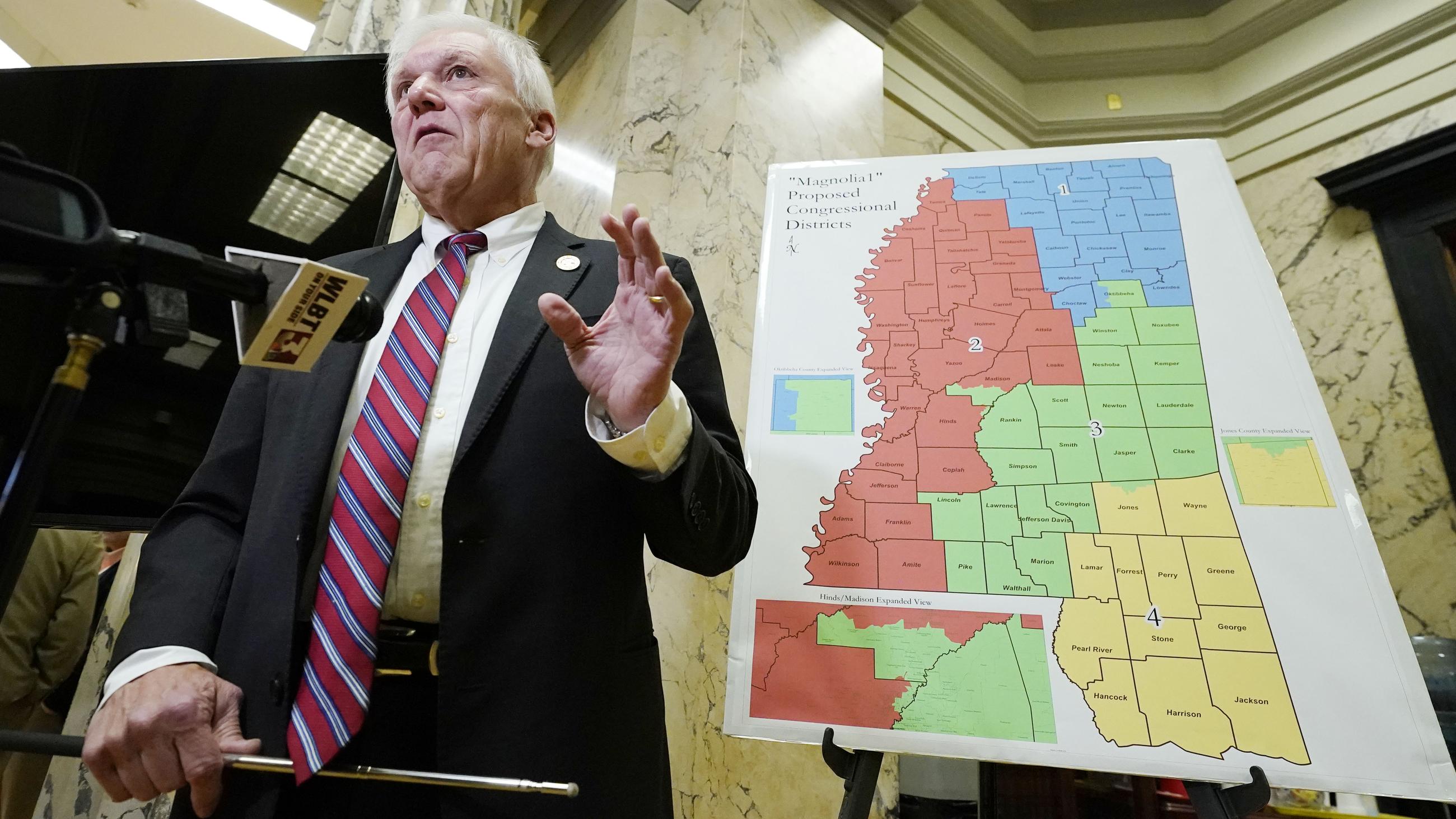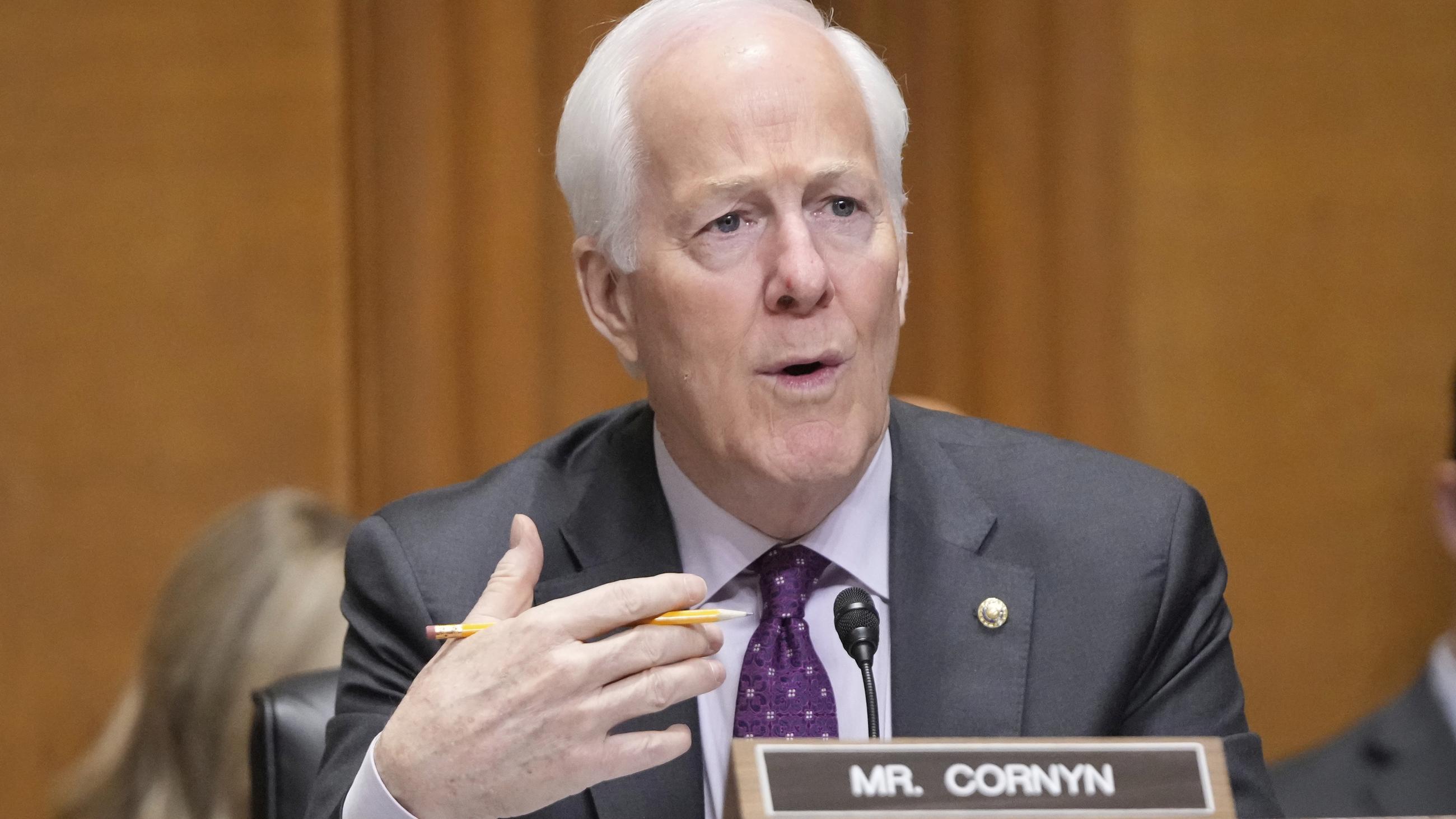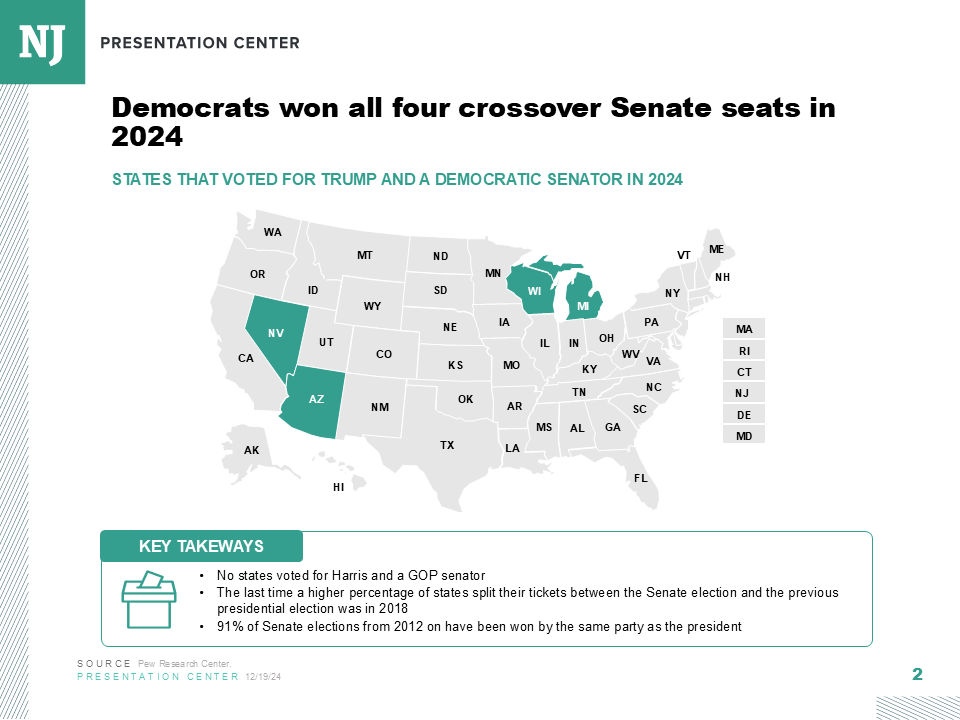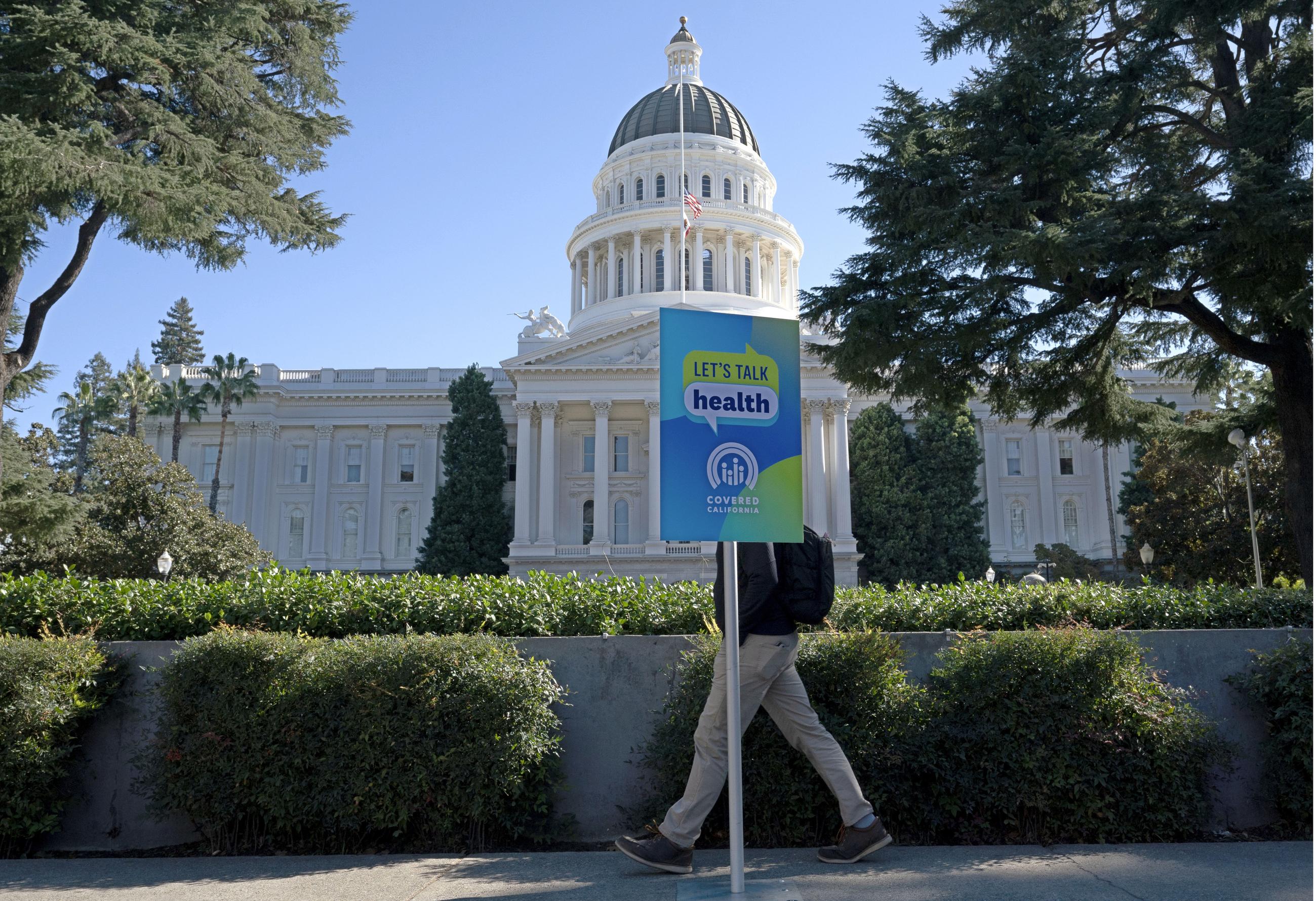House Republicans enter the 2026 cycle with a three-seat majority, and they hope to defy history by maintaining control of the chamber. That won’t be easy: Since World War II, the party in power has lost more than 25 seats on average in midterm elections, per FiveThirtyEight.
But Democratic and Republican operatives concede that the battlefield has shrunk and, at this moment, neither party is bracing for a 2018-like wave, even if history suggests it might be a Democratic-leaning year. Democrats currently lead on the aggregate generic ballot by 3 points.
Redistricting once again influences the map. Republicans are expected to gain seats in Ohio and Texas, while the White House has urged several other Republican-led states across the country to remap. California Gov. Gavin Newsom has threatened a redistricting plan of his own, but the state puts several legal barriers in his way.
Despite the likely gains via redistricting, Republicans face the prospect of turning out voters without President Trump on the ballot, a challenge that has dogged the party in midterms and special elections since his ascent in 2016.
All told, six months into the election cycle, there’s more uncertainty than clarity. What is clear, though, is that Republicans will be tasked with defending the passage of their budget bill. While certain provisions in the bill—such as eliminating taxes on tips and overtime—poll favorably, its overall image is underwater. Democrats are sure to focus on the health care and cost-of-living aspects of the measure.
As Hotline has cautioned in the past, these rankings are an assessment based on a snapshot in time, and they represent an initial benchmark of the competitive battlefield. These rankings do not forecast which party might win the majority but rather consider each race on its individual merits. They are based on conversations with strategists, consultants, and campaigns in both parties.
- Nebraska’s 2nd: Open (R)
Democrats rejoice as centrist Rep. Don Bacon is calling it quits at the end of the term. Since his election in 2016, Democrats have tried, and tried again, to defeat the Air Force veteran to no avail, despite the blue tinge to the district. Bacon won by about 6,000 votes last cycle, even as late polling showed him in trouble. Bacon doesn’t grow on trees, and unless Republicans find another superstar, this is undoubtedly the most vulnerable seat in the country. - Colorado’s 8th: Rep. Gabe Evans (R)
Winning reelection as a freshman is one of the most difficult feats in politics. Evans, one of the GOP’s strongest recruits last year, faces a challenge in a two-cycle-old district that has had two representatives. No candidate—former Rep. Yadira Caraveo or Evans—has cleared 50 percent in an election, and it’s likely to be another knife fight in a dark alley. Evans has a few things going for him right now: the six-way Democratic primary that includes Caraveo and other elected officials, as well as a fundraising advantage. Despite her name recognition, Caraveo may not be the strongest candidate to take on Evans, as she’s reportedly struggled with her mental health and faces claims of staff mistreatment by former aides. - California’s 13th: Rep. Adam Gray (D)
This Central Valley seat has produced some of the closest elections in each of the last two cycles, and a rightward shift at the top of the ticket likely ensures that again. Gray emerged victorious after an unsuccessful 2022 campaign. The Republican field is not clear: Ceres Mayor Javier Lopez was thought to be a compelling candidate, but he raised less than $100,000 during the last quarter. No matter what the matchup is, Gray will have a fight ahead of him. - Pennsylvania’s 7th: Rep. Ryan Mackenzie (R)
Mackenzie snuck past Democratic Rep. Susan Wild last year amid a Democratic collapse in Pennsylvania, making him one of this cycle’s most vulnerable candidates. No clear front-runner has emerged in an eclectic field of Democrats. Republican-turned-Democrat former federal prosecutor Ryan Crosswell, Wild-endorsed energy-engineering manager Carol Obando-Derstine, and Northampton County Executive Lamont McClure, who has struggled to raise money, are all running. Mackenzie had a solid second fundraising quarter, and he’ll need every penny to win a second term. - Iowa’s 1st: Rep. Mariannette Miller-Meeks (R)
After the closest race in the country here last year, Democrats are finally convinced they can defeat Miller-Meeks. To do so, they’ll run back Christina Bohannan, a former state representative who will take her third crack at the Republican. The congresswoman has long struggled with her base, but Republicans say she’s worked to improve her image. Retread candidates are not always the most successful, but Miller-Meeks ran and lost three times before a 2020 victory. The last time they squared off in a midterm, in 2022, Miller-Meeks bested Bohannan by 7 points.
6. Ohio’s 9th: Rep. Marcy Kaptur (D)
Kaptur’s political obituary has been written multiple times, but she’s continued to win. She hasn’t had the strongest of Republican opponents in her last two elections, but she’s managed to prevail even as Trump has carried the district. 2024 Republican nominee Derek Merrin—an 11th-hour choice last cycle—is running again, but some Republican operatives are excited about state Rep. Josh Williams. Per state law, Ohio must head to the drawing board to remap its congressional lines, putting Kaptur firmly in the crosshairs of Republican legislators. They’ll be able to make this seat a few points redder, but without Trump on the ballot it should remain close.
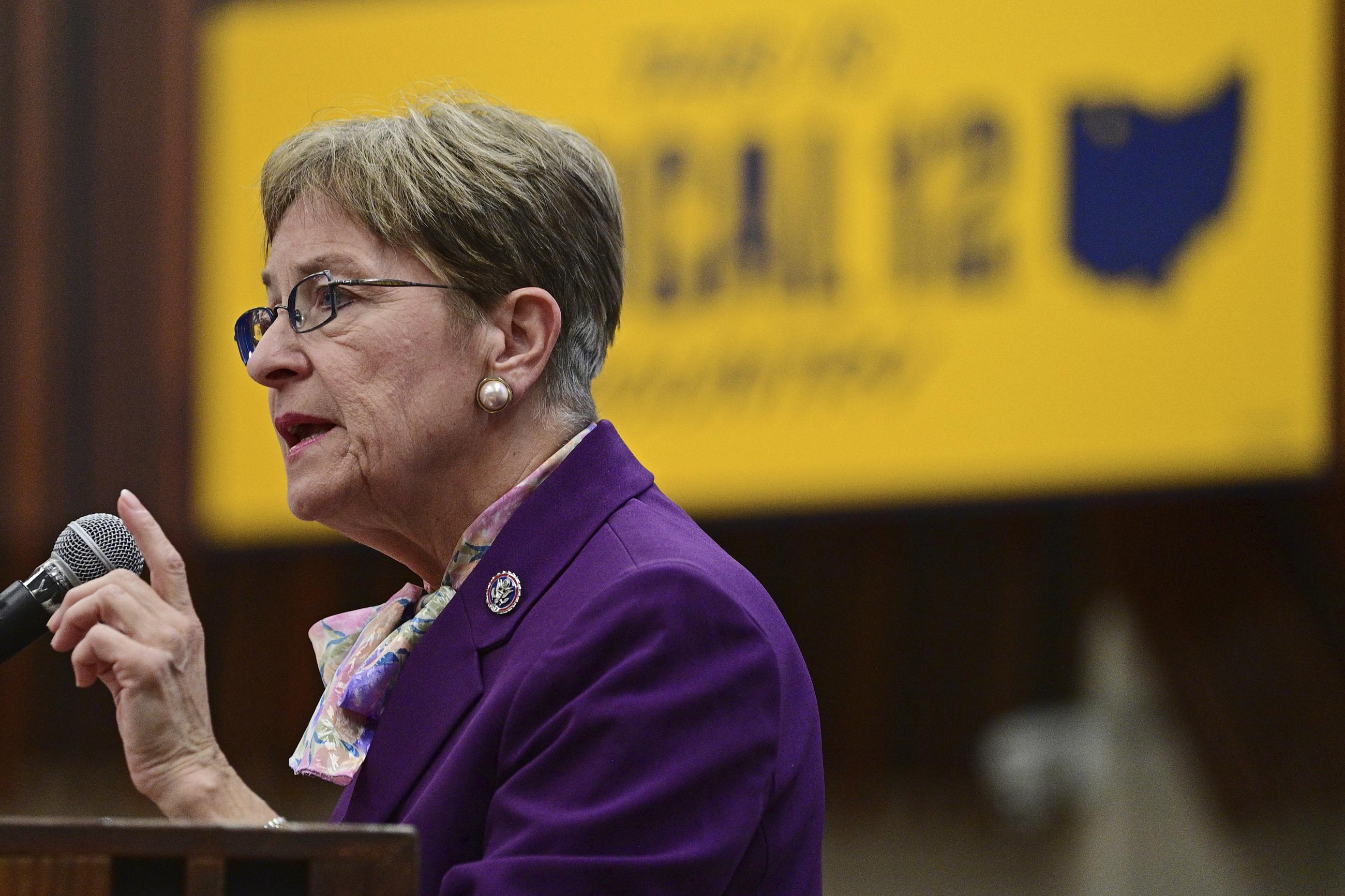
7. Maine’s 2nd: Rep. Jared Golden (D)
Golden represents the most Republican-leaning district of any Democrat in Congress, and he’ll face yet another tough reelection campaign. Last cycle, he staved off a spirited challenge from Republican former state Rep. Austin Theriault, a top recruit and favorite of National Republican Congressional Committee Chairman Richard Hudson, by 2,500 votes. The general-election matchup is all but set: Former Gov. Paul LePage launched his campaign earlier this year, effectively clearing the Republican field. The 76-year-old LePage consistently won the rural Maine district during his three gubernatorial campaigns. The handful of polls already conducted show a close contest. It’ll be a high-profile matchup in rural Maine as Golden has become Republicans’ white whale up north.
8. Pennsylvania's 10th: Rep. Scott Perry (R)
Democrats put a concerted effort last cycle into unseating Perry, who faced a slate of negative headlines and legal trouble stemming from his role in Jan. 6. Democrat Janelle Stelson came up just short—by 1.2 points—as former Vice President Kamala Harris’s support cratered in the Keystone State. Stelson recently relaunched a campaign, and with popular Democratic Gov. Josh Shapiro atop the ticket, Democrats think they can finally defeat Perry, who significantly under-ran Trump.
9. Texas’ 34th: Rep. Vicente Gonzalez (D)
This Rio Grande Valley district has continued to shift right since 2016, so much so that Trump carried the district last year. Gonzalez won by about 5,000 votes in a rematch with former Rep. Mayra Flores, and Republicans are emboldened by the continued trends. Republican Army veteran Eric Flores, considered a solid contender, recently launched a bid for the seat, and more are potentially on the way. Texas Republicans are pursuing mid-cycle redistricting this month in Austin, and this seat is among their top targets. If the district gets much redder, it could significantly damage Gonzalez’s reelection prospects.
10. North Carolina’s 1st: Rep. Don Davis (D)
This seat hosts the only competitive race in North Carolina following mid-cycle redistricting in 2023, and it’s likely to be another high-stakes matchup. The early front-runner for the GOP nomination is Rocky Mount Mayor Sandy Roberson, a 2022 candidate who has loaned his campaign $2 million. The GOP has suffered from weaker candidates the last two cycles, but Davis is a tough out. He also received a gift this week: Former Gov. Roy Cooper is expected to run for Senate, giving Democrats their best chance to flip a seat in years. It should provide some extra motivation for Democrats.
11. Arizona’s 6th: Rep. Juan Ciscomani (R)
Ciscomani has been a prime Democratic target the last two cycles, but he’s established himself as a prolific fundraiser and a quality candidate. After passing on a gubernatorial bid—welcome news for House Republicans—he seems to be headed toward a showdown with Democrat JoAnna Mendoza, a Marine Corps veteran who has proven an effective fundraiser. With a governor race also taking place in Arizona, expect a hefty price tag on this one.
12. California’s 45th: Rep. Derek Tran (D)
Tran shocked some in the political world by unseating Republican Rep. Michelle Steel, one of the GOP’s strongest fundraisers. This Orange County race started on the peripherals of our power rankings last cycle, but Tran chipped away gradually, making inroads with the Vietnamese American community in the district. He won by fewer than 700 votes. Steel has filed again but does not appear to be making any efforts to mount a campaign at this stage. The Los Angeles media market is also tough to break through for any challenger. Republicans will contest the seat regardless. Orange County Supervisor Janet Nguyen is a rumored candidate.
13. Wisconsin's 3rd: Rep. Derrick Van Orden (R)
Democrats came in late with millions of dollars to this rural, Trump-won seat, but it was not enough as Van Orden bested Democrat Rebecca Cooke by about 3.5 points. Cooke decided to give it another go, giving Democrats hope against an opponent who often finds himself in the headlines. Cooke ran a decidedly moderate campaign, something she’ll need to do again if she wants a chance in the Republican-leaning seat. But Democrats see Van Orden as highly vulnerable in a race shaping up to be about costs and health care.
14. Ohio’s 13th: Rep. Emilia Sykes (D)
This race was largely off the radar as Sykes and Democrats maintained a major spending advantage over Kevin Coughlin and the Republicans. But Trump lost this district by only about 200 votes and Sykes won a closer-than-expected 2-point race. Coughlin says he’s improved his fundraising as he returns for a second crack at the Akron-area seat. During the last midterm, Sykes won by about 4 points. However, Ohio’s pending redraw is likely to make this seat more favorable to Republicans.
15. Michigan’s 7th: Rep. Tom Barrett (R)
Barrett may have been Republicans' best recruit last cycle. An Army veteran and former state legislator, Barrett sought the seat after a loss in 2022. He won by about 4 points last year in an open race against a weaker Democratic opponent. The Democratic primary is well underway: Former U.S. Ambassador to Ukraine Bridget Brink and former Navy SEAL Matt Maasdam are both seen as strong candidates. Some Democratic operatives prefer Maasdam, but it remains to be seen if he can raise the money to contend against a well-funded Barrett.
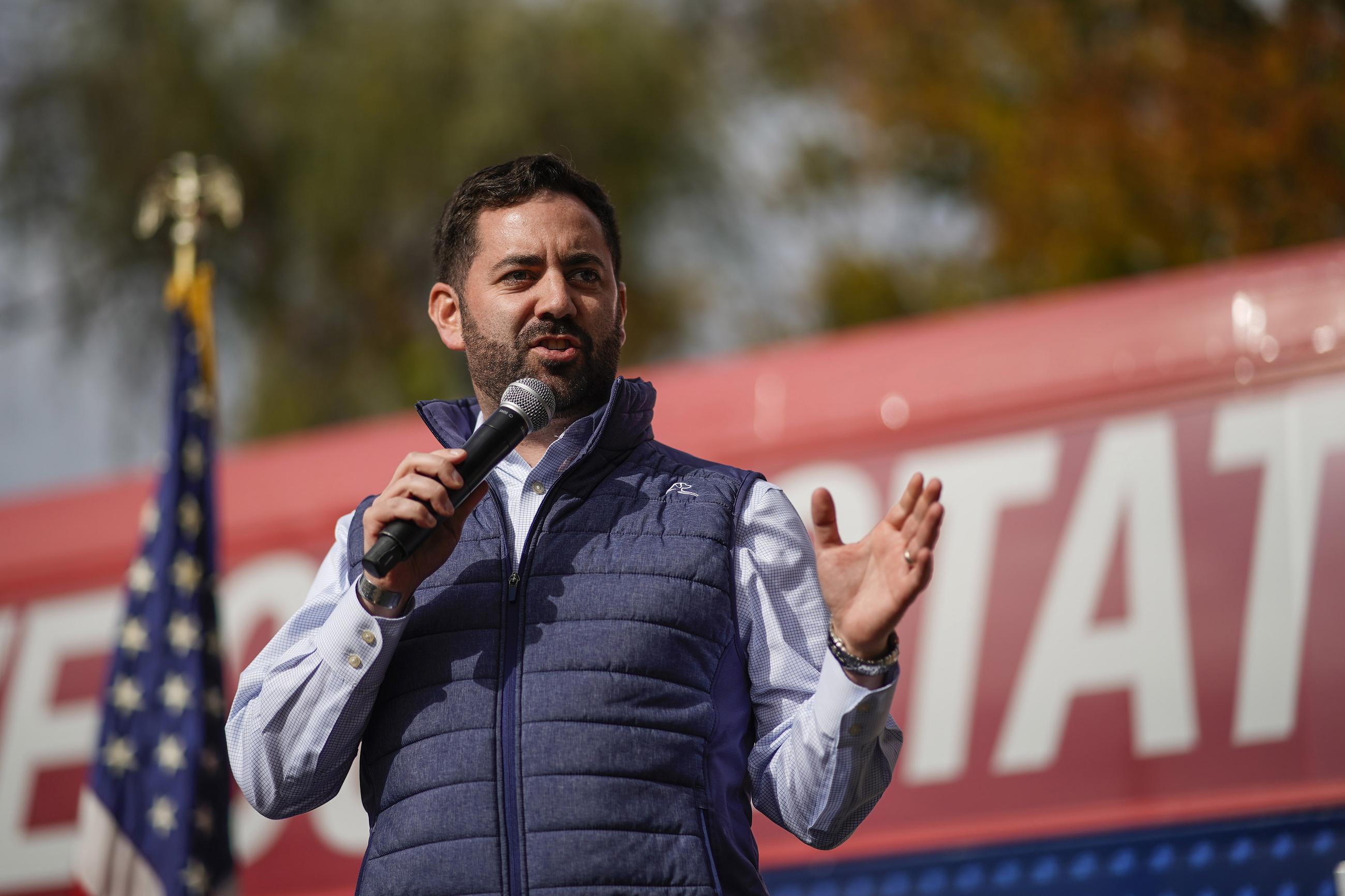
16. New York’s 17th: Rep. Mike Lawler (R)
Lawler announced this week he will seek reelection instead of the governorship, marking a key win for Republicans as they defend their narrow majority. Lawler has established a reputation as a moderate on Capitol Hill, an image Democrats tried, albeit unsuccessfully, to crack last cycle. It’s one of just three Republican-held districts Harris carried, meaning it’s fundamentally competitive, and a Democratic-leaning year could be challenging for Lawler to overcome. Democrats have a crowded primary, which could drain resources in one of the nation’s most expensive districts.
17. California’s 22nd: Rep. David Valadao (R)
Valadao lost his seat in 2018 for his vote to slash the Affordable Care Act, only to return two years later. Democrats were bullish on their chances in the two elections since but came up short in each. After Valadao voted for Trump’s reconciliation bill, which will cut Medicaid, Democrats again think they’re poised to defeat the dairy farmer. Democrats like Assemblywoman Jasmeet Bains, a doctor, as an effective foil against Valadao in the district that has the highest percentage of Medicaid recipients in the country. Still, Valadao is a proven winner, and any Democratic candidate faces an uphill battle.
18. Texas’ 28th: Rep. Henry Cuellar (D)
This heavily Hispanic district had one of the most significant rightward swings in the country amid Trump’s surge with Latino voters last cycle. But Republicans ran an underfunded white candidate with no real stake in the district, and Cuellar won by 5 points. Republicans see it as a top offensive opportunity. This is a race marred by uncertainty as Cuellar awaits trial on federal bribery charges. The White House also has this district in its crosshairs for mid-cycle redistricting. If the dominoes fall in order for Republicans, this race likely skyrockets up the list, but, at this moment, with uncertain lines, no Republican candidate, and a pending trial, it appears difficult to knock off an institution like Cuellar.
19. Michigan’s 10th: Open (R)
The last time this seat was open in a midterm year, Rep. John James won by about 1,600 votes. He then won by 6 points in a rematch with flawed Democrat Carl Marlinga. James has left the seat open to run for governor, and Democrats hope the race will be more like 2022 than 2024. They’re confident they’ll have a better nominee this time around: Former Biden administration official Eric Chung, Pontiac Mayor Tim Greimel, and former special-victims prosecutor Christina Hines are already running. No major Republican has launched a bid yet. Competitive open seats have proven particularly volatile in Michigan since 2022, as three of four have flipped parties; Democrats hope to add another to that list.
20. Iowa’s 3rd: Rep. Zach Nunn (R)
Over the past few weeks, Nunn considered both a run for the ruby-red 4th District, as well as a run for governor. He got neither, as Trump endorsed him for reelection in the competitive 3rd District. This race was decided by about 2,000 votes in 2022, with Nunn flipping the seat, and he expanded his margin to 4 points as Trump’s performance in Iowa improved in 2024. Democrats feel bullish about the seat, especially with Auditor Rob Sand—Iowa’s highest-profile Democrat—running for governor. Sand will have to do well here to secure a long-shot win statewide, which could help Democrats down the ballot. Democrats have two viable candidates running: state Sen. Sarah Trone Garriott and state Rep. Jennifer Konfrst. Still, Nunn, an Air Force veteran, will not make it easy on either.



